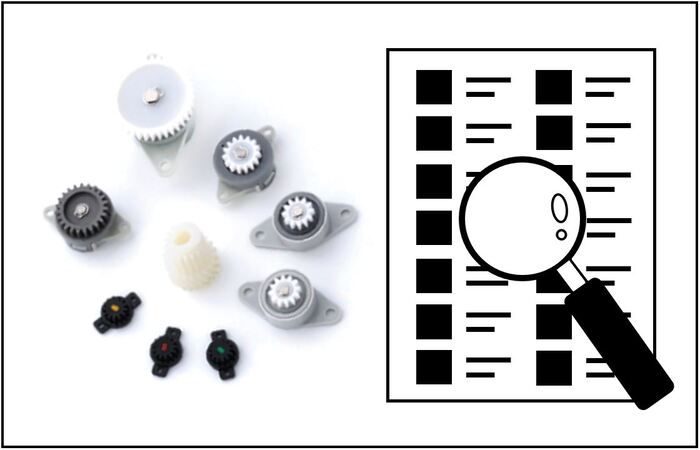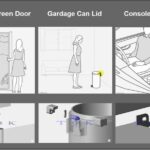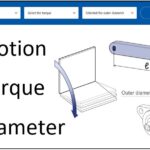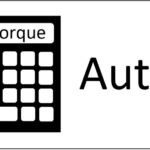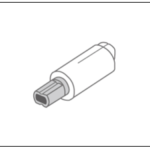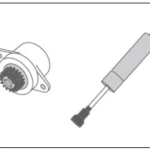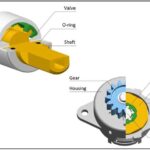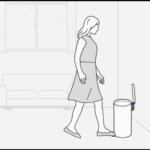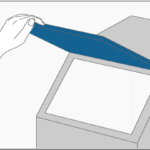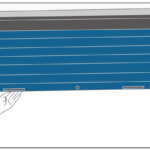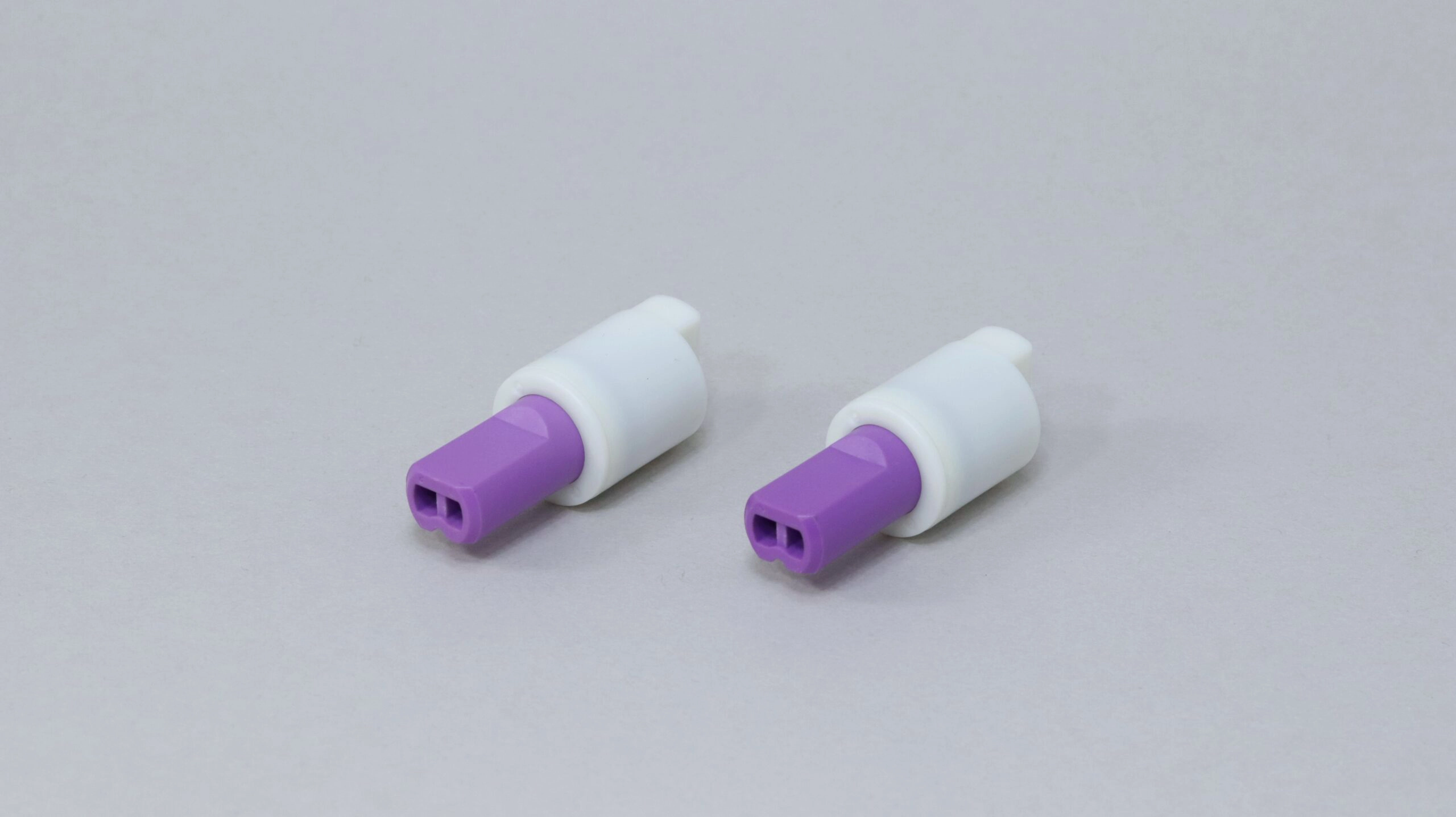
Basically, TOK partial rotation angle type rotary damper has 110 degrees of rotation angle. Partial rotation angle dampers are effective for swinging motion, but if the angle is larger than 110 degrees, continuous rotation dampers should be used. However, continuous rotation dampers move differently from partial rotation angle dampers, and therefore, TOK has been unable to meet the demands of customers who desire partial rotation angle dampers with a large rotation angle.
Then TOK succeeded in developing TD154, a partial rotation angle damper with 290 degrees rotation angle based on TD99 series, which significantly reduces the angle limitation. We now offer a new option to you who have been unable to install rotary dampers due to angle restrictions. In this issue, we will explain the rotation angle of the new product TD154, comparison between the conventional partial rotation angle damper and continuous rotation damper, and main usages.
The rotation angle of conventional partial rotation angle damper and TD154
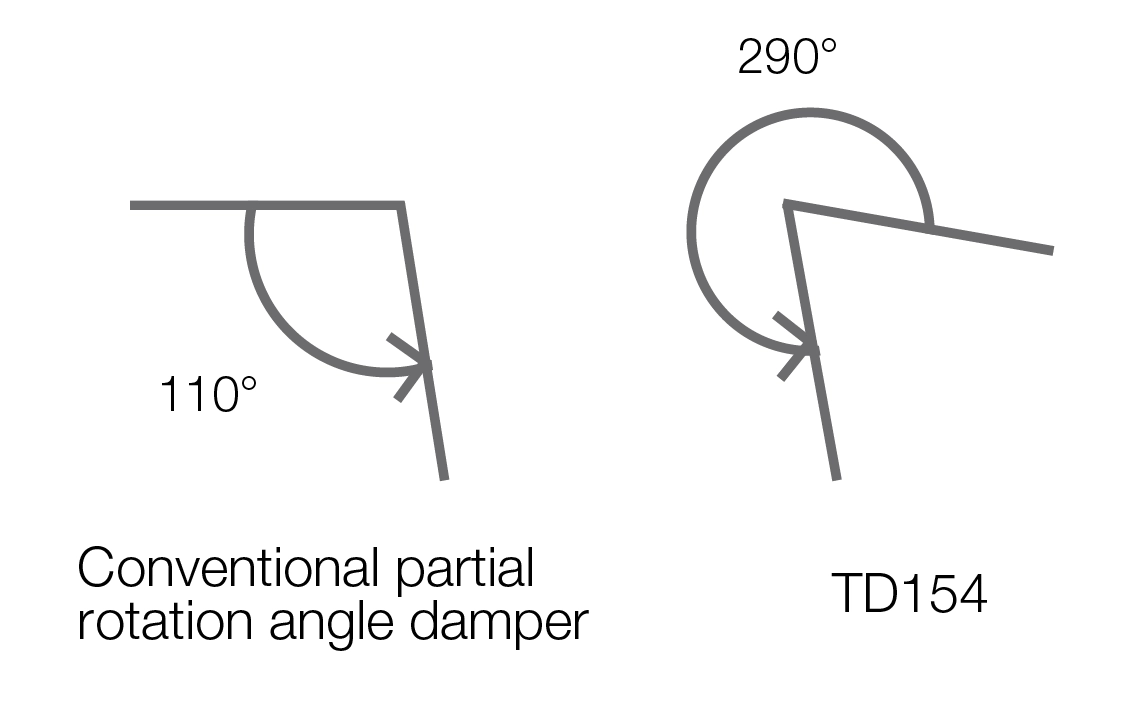
The rotation angle of conventional partial rotation angle dampers were basically 110 degrees. This is because of internal design reasons and because the lids of toilets in Japan, which were the primary use of rotary dampers in the early stages of their development, opened 110 degrees. If the required rotation angle exceeded 110 degrees, a continuous rotation damper had to be used instead of a partial rotation angle damper. Therefore, if a continuous rotation damper was not desired, a rotary damper could not be installed.
On the other hand, the newly developed TD154 is a partial rotation angle damper with a rotation angle of 290 degrees. In order to demonstrate the damper effect at a rotation angle of 290 degrees for the first time in TOK, TD154 was developed through numerous prototypes and design changes. The larger rotation angle allows the rotary damper to be mounted on your products that previously could not be mounted due to angle restrictions, and it can generate more torque than a continuous rotation damper. In addition, if the required torque is met, TD154 can be mounted on your products with a rotation angle of 110 degrees, eliminating the need to change the products ordered according to the type of product, which has advantages in terms of product management and cost by placing orders in bulk.
The comparison with conventional partial rotation angle dampers and continuous rotation dampers

Rotary dampers are divided into partial rotation angle dampers and continuous rotation dampers and each of them has its own advantages and limitations. The partial rotation angle damper has a torque range divided into a high torque range and a low torque range, so it can provide high torque, but the rotation angle is basically limited to 110 degrees. On the other hand, continuous rotation dampers have no restrictions on rotation angle, but since they always exert a constant torque, they have the disadvantage of low torque and lack of power of holding on at the end of the damper action. (Click here to see the operation for which continuous rotation dampers are suitable.) TD154 combines the advantages of both types of rotary dampers, providing the necessary torque with a wide rotation angle and holding on at the end, and is positioned between a partial rotation angle damper and a continuous rotation damper. TD154 is designed based on TD99 series, which has three types of motion products, horizontal, vertical, and horizontal and vertical use, but now with the addition of TD154, new motion options have been added.
Main usages
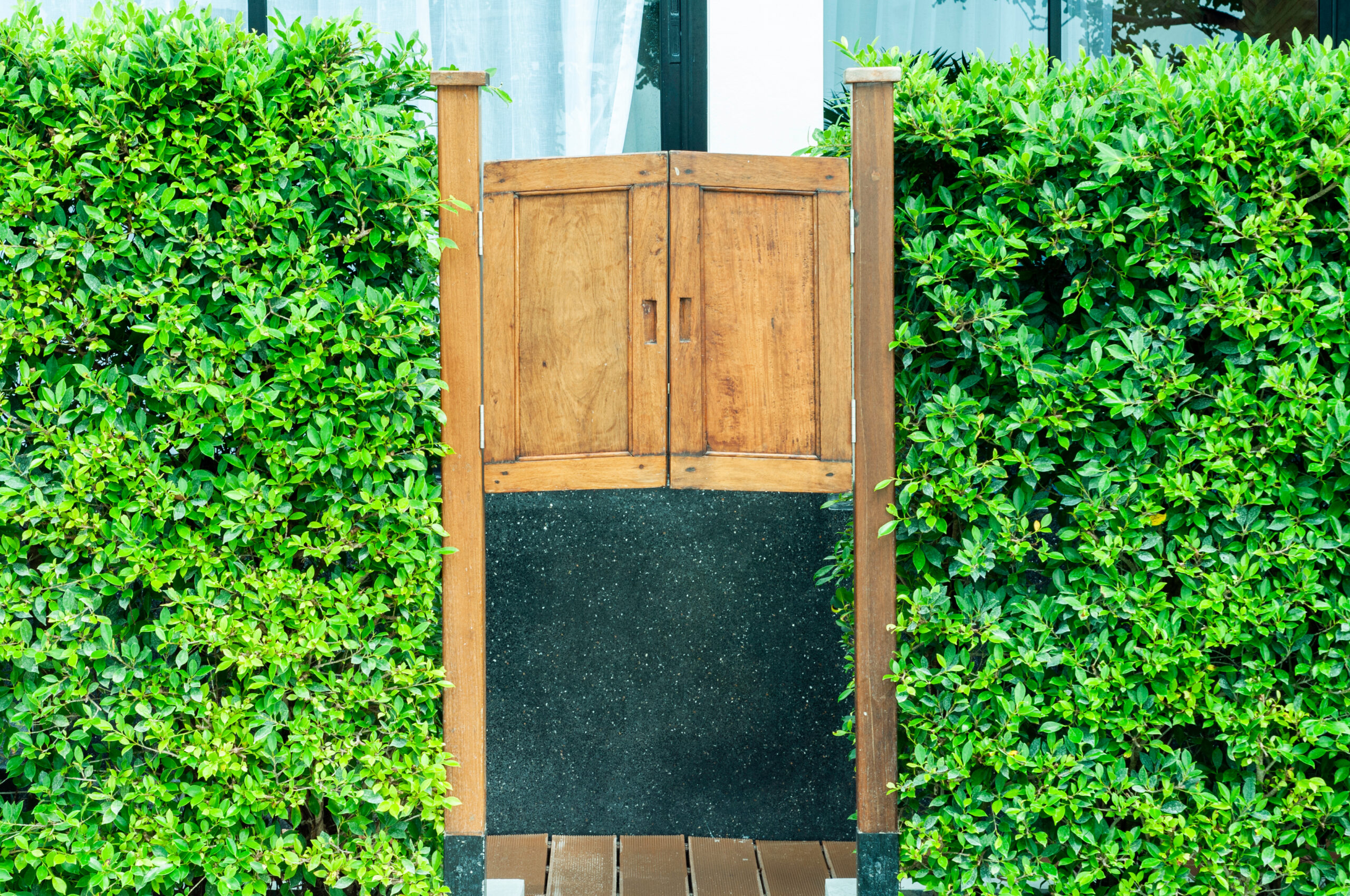
TD154 can adapt to a variety of use environments. As an example, doors that open slowly and wide, which do not tolerate impact, could take advantage of TD154’s characteristics. Doors for incubators or swinging doors are suitable for TD154.
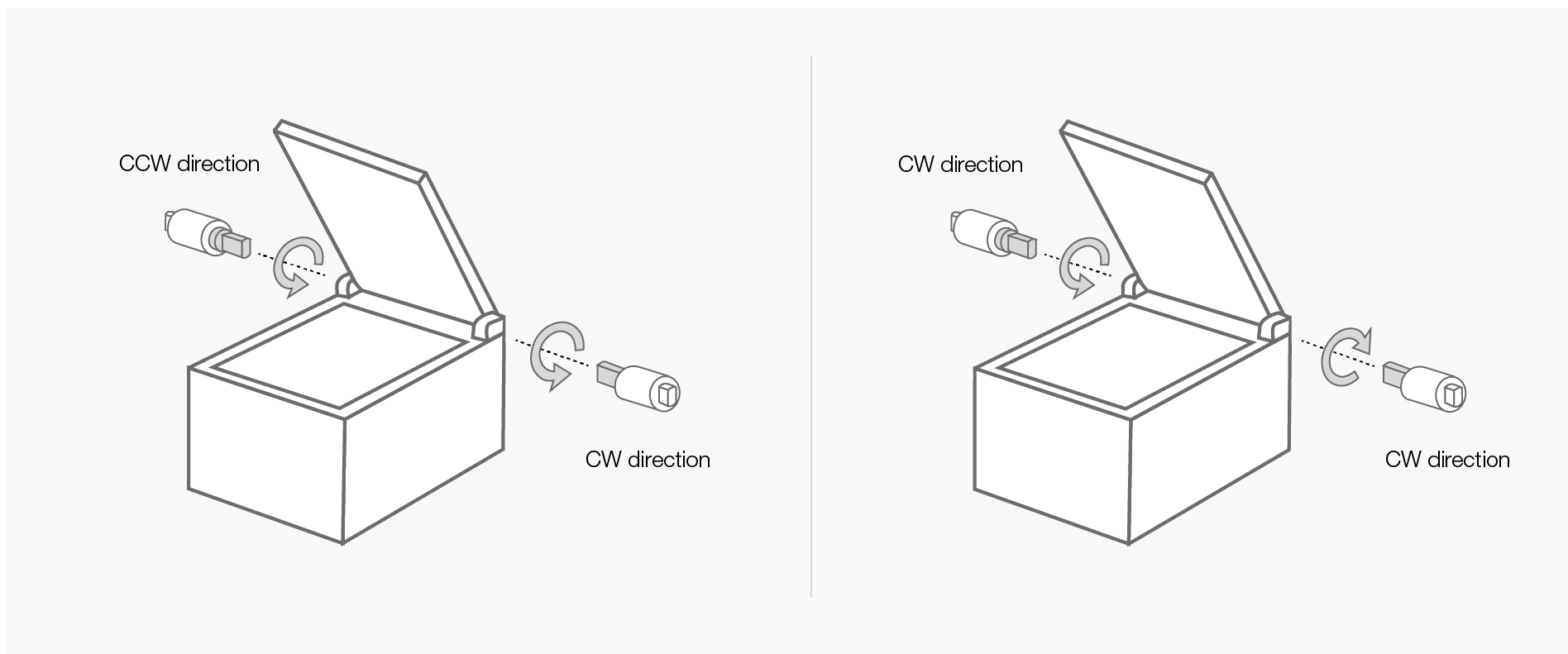
You can also install rotary dampers with opposite directions on each side of your product. Up until now, the mainstream was to install CW/CCW type rotary dampers from both sides in the same direction to exert a damper effect in the same direction, however, by attaching the same CW type rotary dampers, it can be used in a new way to provide a damping effect in both the opening and closing directions of the door, and to operate the door more slowly.
You can check the motion of TD154 with this video.
Summary of Large rotation angle rotary damper | Introduction of TD154
TD154 is a new rotary damper never seen before. It offers a new option for your products that could not be mounted due to angle limitations. For detailed specifications, please refer to TD154 page.
This development also started from the customer’s request. If the performance of existing products is not enough, please feel free to contact us.
フォームが表示されるまでしばらくお待ち下さい。
恐れ入りますが、しばらくお待ちいただいてもフォームが表示されない場合は、こちらまでお問い合わせください。

